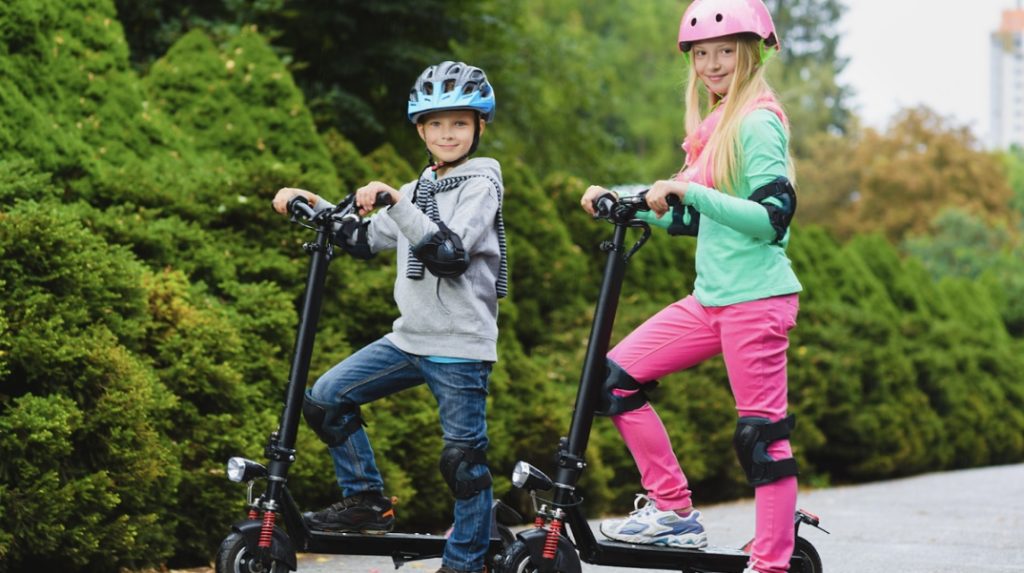Something’s shifting on Canadian streets, and it has nothing to do with your morning espresso. Electric bicycles are reshaping urban mobility from daily commutes to weekend trail escapes to grocery runs.
Here’s a striking data point: rebate recipients increased their e-bike use by an average of 40 kilometers per week and reduced motor vehicle use by 17 kilometers per week after just one year. That’s evidence that eBikes Canada enthusiasts have found something worth sticking with.
Yet the sheer variety of models makes selection daunting unless you grasp what differentiates one type from another. Before diving into specific models, you’ll want clarity on Canada’s legal landscape which electric bikes are permitted, and where you’re allowed to ride them.
City Commuter eBikes: Navigate Urban Canada With Ease
Urban environments demand dependable machines capable of handling repetitive daily use. Commuter variants lead among types of eBikes because they’re pragmatic workhorses built for genuine riding conditions.
Key Features of Best Electric Bikes Canada for Commuting
Serious commuter eBikes include factory-installed lighting and fenders. These aren’t optional extras; they’re essential equipment for Canada’s seasonal extremes. Carrying capacity matters equally, whether transporting groceries or work essentials.
While browsing electric bikes for sale, prioritize realistic range projections over manufacturer maximums, since battery performance fluctuates considerably, but most urban riders require 40-60 km capacity. That handles typical city distances comfortably.
Winter Commuting Considerations
Cold temperatures impact battery output significantly anticipates a roughly 20-30% range decline below -10°C. Indoor battery storage helps, and keeping them insulated during rides preserves performance. Studded tires completely transform winter riding from nerve-wracking to assured, justifying their investment.
Commuter eBikes excel on asphalt, but Canada’s renowned trail systems require a distinct electric bike category designed for rugged landscapes and elevation challenges.
Understanding eBike Classifications in Canada
Canadian eBike laws appear complex initially. Truth is, they’re remarkably consistent once decoded. Provincial variations exist but follow similar core principles.
Federal and Provincial Regulations You Need to Know
Across Canada, 500W represents the standard power ceiling, though enforcement rigor differs provincially. Motor-only assistance gets capped at 32 km/h in most jurisdictions. Pedal requirements vary; provinces mandate functional pedals, while others permit throttle-exclusive operation.
Local bylaws determine riding locations. Cities generally welcome eBikes in designated cycling infrastructure, but sidewalk use typically violates ordinances.
Class 1, 2, and 3 eBikes Explained
Class 1 units deliver pedal-assist exclusively motor engaging only during pedaling. Class 2 variants incorporate throttle functionality, enabling propulsion without leg effort. Class 3 machines surpass 32 km/h and frequently mandate additional equipment like speedometers.
Canadian winters actually favor Class 1 configurations since pedaling generates body warmth. However, throttle capability proves valuable when you’re layered in bulky winter clothing.
Now that the regulatory framework is clear, let’s examine the dominant category: urban commuter eBikes engineered for Canadian city conditions.
Mountain eBikes: Conquer Canadian Trails
Trail exploration takes eBikes Canada riders to stunning wilderness locations. German research revealed that one-fifth of e-bike users either sold their car or decided to abandon previous plans to purchase a car, demonstrating how these machines become primary transport.
Full-Suspension vs. Hardtail eMTBs
Full-suspension mountain eBikes absorb technical terrain beautifully but demand a higher initial investment. Hardtails deliver superior value with reduced maintenance demands, making them appropriate for weekend warriors. British Columbia’s challenging topography benefits from full suspension, whereas Ontario’s gentler trails accommodate hardtails effectively.
Motor Placement and Trail Performance
Mid-drive motors centralize weight distribution and deliver superior climbing torque. Hub motors reduce costs but falter on aggressive inclines. For dedicated trail riding, mid-drive configurations warrant their premium pricing through enhanced performance and improved weight balance.
Beyond recreation and commuting lies an expanding category revolutionizing how Canadian families move children, provisions, and cargo with eBikes.
Cargo and Family eBikes: The SUV of Electric Bikes
Cargo eBikes are recalculating family transportation decisions. These aren’t merely bicycles, they’re legitimate automobile replacements that function effectively in metropolitan contexts.
Longtail vs. Front-Load Cargo eBikes
Longtail configurations extend rear capacity for child seating or cargo storage. They handle similarly to conventional bikes despite their substantial load capacity. Front-load variants position cargo ahead of the handlebars, providing superior child visibility but demanding adjustment to altered handling dynamics.
Typical cargo eBikes accommodate 100-200 kg payload excluding rider weight. That’s sufficient for dual child seats plus substantial groceries.
Family Transportation Solutions
Parents are realizing cargo eBikes beat driving in congested metropolitan areas. Zero parking frustration, no traffic idling, and children enjoy the outdoor experience. Winter functionality requires weather shielding like canopies, yet countless Canadian families maintain year-round riding schedules.
If cargo eBikes represent the SUV segment, folding eBikes are the compact answer for space-constrained Canadians balancing transit, apartments, and flexibility.
Specialty Options Worth Considering
The best electric bikes in the Canadian market include specialized designs addressing particular requirements. These niche segments solve specific challenges exceptionally well.
Folding eBikes for Multi-Modal Commuters
Folding eBikes fit vehicle trunks, office corners, and transit systems during permitted hours. Most collapse within 30 seconds without tools. They sacrifice some stability and distance for an unparalleled portability ideal when combining cycling with rail commuting. Compact battery sizing keeps folding models lighter but typically restricts range to 30-50 km.
Fat Tire eBikes: All-Season Canadian Adventure
Those exaggerated tires serve a genuine purpose. Fat tire eBikes traverse snow, sand, and loose surfaces where conventional bikes struggle. They offer remarkable stability and build confidence for inexperienced riders or those with balance considerations.
The compromise? Additional weight, reduced pavement speed, and those massive tires create substantial rolling resistance.
Understanding eBike categories is foundational to how you select the appropriate model for your particular Canadian circumstances. Let’s develop your customized selection framework.
Choosing an eBike: Your Personal Matching Guide
This electric bike guide for Canadian cyclists begins with a realistic self-evaluation. Discard aspirational scenarios and concentrate on genuine riding behaviors.
Assess Your Primary Riding Needs
Calculate actual ride distances, not hypothetical epic journeys. Considering topography, cities require less motor power than mountainous regions. Climate matters substantially; coastal precipitation demands different specifications than prairie cold.
Budget Planning for eBikes Canada
Entry-level machines ($1,500-$2,500) suffice for occasional riders. Mid-tier bikes ($2,500-$4,500) provide superior components and durability. Premium selections ($4,500+) deliver exceptional performance but exceed most riders’ requirements.
Remember accessories, maintenance expenses, and storage requirements when establishing budgets.
| eBike Type | Best For | Winter Suitability |
| Commuter | Daily urban riding | Good with prep |
| Mountain | Trail riding | Moderate |
| Cargo | Family transport | Good with accessories |
| Folding | Space-limited living | Fair |
| Fat Tire | All-season adventure | Excellent |
Your Journey Starts Here
Choosing an eBike aligned with your lifestyle converts daily transportation from obligation to enjoyment. Whether commuting professionally, exploring the backcountry, or transporting family around town, there’s an ideal electric bike awaiting discovery.
The selection might feel overwhelming initially, but prioritize genuine requirements over impressive specifications. Test ride multiple models before committing comfort and feel outweigh paper statistics. Canada’s eBike community is welcoming and expanding rapidly, so you’ll discover abundant support once you embrace the electric revolution.
Common Questions About eBikes in Canada
Do I need a license to ride an eBike in Canada?
Most provinces exempt standard eBikes under 500W and 32 km/h from licensing requirements. Some mandate minimum ages (typically 16) and helmet use. Always verify your provincial regulations before riding.
How far can I actually ride in a Canadian winter?
Anticipate a 20-30% range reduction during cold conditions. A bike rated for 60 km might deliver 40-45 km at -10°C. Maintain battery warmth and you’ll preserve better performance throughout winter.
What’s the best type of eBike for seniors in Canada?
Step-through frames with upright positioning work optimally. Consider comfort or cruiser eBikes featuring pedal-assist. Three-wheel eTrike configurations provide excellent stability for riders with balance concerns.


